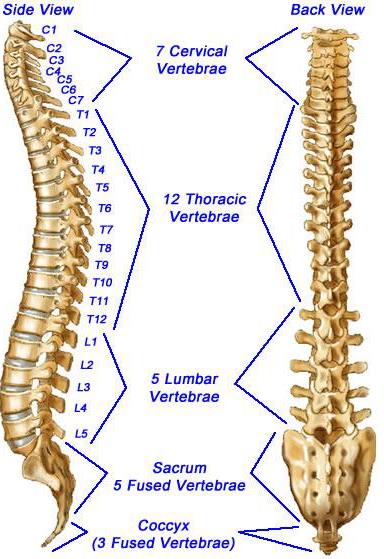Figure 1 Model of a SpineShape implant: the screws are anchored into the spinal column while the rods connect the screws. Image by S. Freudiger
The Complexity of the Vertebral Column
What is the Vertebral Column?
The vertebral column is a group of bones, ligaments and other structures found in the back (also known as backbone or spine), the well function of which is essential to our wellbeing.
One of its most important function is to enclose and protect the spinal cord; a collection of nerves which transmit information throughout the body. Another crucial aspect of the vertebral column is the fact that it carries the weight of the body and it contributes to our posture and the distribution of the forces among the different muscles and body structures.
Back problems are a growing concern in the Healthcare sector, and it is very important to be aware of our back health to take care of it and ensure a healthy and pain-free life.
Structure and function of the Vertebral Column
The small bones which constitute the vertebral column are called vertebrae, and although they all have a similar basic shape and function, we can classify them separately depending on the region of the spine in which they are found; we find the cervical vertebrae, the thoracic vertebrae, the lumbar vertebrae, the sacrum and the coccyx (the vertebrae constituting the sacrum and the coccyx are all fused together, instead of being independent vertebrae like in the rest of the column). Image adopted from https://kidport.com/RefLib/Science/HumanBody/SkeletalSystem/Spine.htm

The basic shape of every vertebrae responds to the functions we have explained earlier; the carrying of weight and the protection of the spinal cord.
The posterior part of the vertebrae (that is, the back of the vertebrae) is called vertebral arch and has several spine-like structures (called processes) projected outwards.
The anterior part (that is, the part of the vertebra which faces the inner part of our body) is called vertebral body. It is round, flat and sturdy because it is the part of the vertebra which carries most of the weight. As we have said, the vertebral column is the basic pillar of the body, so vertebrae need to be sturdy and resistant.
Between the vertebral arch and the vertebral body we find a hole called vertebral foramen. This little gap provides a space so that the spinal cord can go through the vertebrae and remain protected and enclosed by the bone. But why is the spinal cord so important as to be completely surrounded by hard bone? On the one hand the spinal cord brings the different stimuli detected throughout the body to the brain, so that the brain can process this information and decide on a response when it is needed. On the other hand, the spinal cord sends the responses and orders from the brain to the rest of the body, so that they can be translated into actions. Therefore, the spinal cord has the function of connecting the brain with most of the body, so indispensable that is protected accordingly.

Another characteristic of the vertebral column is that, while being robust, it also needs to allow the movement of the whole torso. Therefore, its bones need to be not only compact and closely linked together, but they also need to allow the spine to bend and twist. An element that allows this, while also preventing the worning out of the vertebrae, are the vertebral discs. These are fibrocartilaginous discs located in between every vertebrae, creating fibrocartilaginous joints that allow slight movement of the vertebrae, protect the bone and function as a shock absorber for the spine.
This cartilage can expand and contract depending on external forces. That is why after space travel, where there is no gravity, a person can return to earth taller than when they left. The gravity on earth also pulls on our bodies over the years, shrinking the cartilage and making us shorter as we age. This adaptability means that if we stretch and take care of our spine daily, we can make a great difference on our back health. Image adopted from Mayfield clinic

Problems in the vertebral column
As we have seen, the vertebral column is an extremely complex part of the body, and while it can be fascinating, this complexity translates into many different spinal diseases and conditions. Almost 6% of the burden of disease in high-income countries (the negative effects on health of all the diseases taken together) is caused by back pain, making it one of the biggest single affectations of health.
Most back pain is "non-specific" (a pain of unknown origin) or "mechanical" (originated from the joints, bones and soft tissues, caused by a bad posture or mechanical strain). However, there are also specific conditions that may lead to back pain, like a slipped intervertebral disc, sciatica, spondylolisthesis, etc.
Many of these conditions appear with the degeneration of the spine, and although not completely preventable, having taken care of our vertebral column health (by controlling our posture, stretching…) may help with the severity and the treatment of these.
In order to treat these painful conditions surgery is sometimes the best option. While the most common approach in the past has been spinal fusion, a new concept called dynamic stabilization is allowing the treatment of these conditions with faster recovery time and lesser secondary effects.
Bibliography
- Anand N, Baron EM. Role of Dynesys as Pedicle-Based Nonfusion Stabilization for Degenerative Disc Disorders. 2012
- Asmussen E. The Weight-Carrying Function of the Human Spine, Acta Orthopaedica Scandinavica. 1959
- Vialle LR, Vialle EN, Suárez Henao JE, Giraldo G. Lumbar disc herniation. 2015
- http://osteomedica.dk/blog/discopathy.html
- https://vizhub.healthdata.org/gbd-compare/
- https://www.gaspine.com/2013/04/20-facts-about-the-spine/
- Global burden of disease





